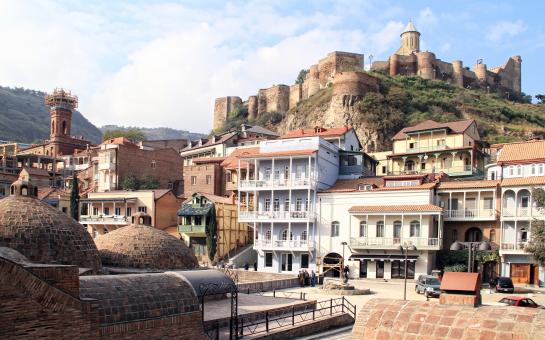Cultural Heritage and intercultural dialogue: Identifying Common Values

Cultural Heritage and intercultural dialogue: Identifying Common Values
SUMMARY OF THE MODULE
The module explores the concepts of cultural heritage as well as the importance of diversity in representation of the world's cultural heritage and fostering dialogue and cohesion between different social and cultural communities.
The lessons define the concepts of cultural heritage, their significance and values, history and importance of intangible cultural heritage, explore the significance of inclusion different social and cultural groups while defining and preserving cultural heritage, present the issues related to the preservation of cultural heritage within international human rights framework and review the methodologies of teaching about heritage through the lenses of cultural diversity. They create an educational resource offering diverse information, based on latest research and real world examples.
TRAINING METHODOLOGY
-
Introductory video
-
Content delivery in lessons
-
Elaboration of relevant case studies and examples during the lessons development
-
Provision of bibliography and references for further elaboration
-
Assessment test at the end of the module
LEARNING OBJECTIVES OF THE MODULE
By the end of the module, participants will be able to:
-
Understand key definitions and concepts of tangible and intangible cultural heritage and importance of their protection;
-
Spread information about cultural heritage as a valuable asset and a tool in the 21st century; underline the importance of diversity in the world and how it is connected to and strengthened by the knowledge of cultural heritage;
-
Understand the importance of representation of diversity and the role of minority communities in creation and transmission of cultural heritage;
-
Contemplate about the diversity of cultural expressions as a source for mutual understanding and peaceful coexistence;
-
Understand the issue of cultural heritage preservation through the lense of human rights and the right to culture and cultural expressions; review the educational tools for cultural diversity and cultural heritage teaching as an educational tool;
-
Demonstrate cultural heritage as an educational tool that creates a unique perspective of our world and society and shows the importance of protecting unique elements of our cultures;
-
Offer the readers an opportunity to learn about the role of cultural heritage in their lives and become more aware of their surroundings and the values of their cultures.
LESSONS OF THE MODULE
Lesson 1. Introduction: Cultural Heritage: Main Concepts and Definitions
Lesson 2. Living Cultural Heritage
Lesson 3. The role of cultural heritage in addressing societal challenges
Lesson 4. The role of cultural heritage and respect for diversity
Lesson 5. Cultural Heritage and diversity teaching as an educational tool
KNOWLEDGE GAINED/ EDUCATIONAL CONTEXT OF THE MODULE
The following content is included in Module 4:
-
Defining Cultural Heritage
-
Types of Cultural Heritage
-
Cultural Heritage Significance and its values
-
Protecting Cultural Heritage
-
Ownership over Cultural Heritage
-
Defining Living Heritage
-
History of the concept
-
Importance of Living Heritage
-
Living Heritage and minorities
-
The Universal Declaration on Cultural Diversity
-
Diversity in Intangible cultural heritage
-
Intangible cultural heritage as a process
ASSESSMENT METHODOLOGY
At the end of every lesson, learner is assessed through a short test of true-false, check –in and matching questions based on the theory of the lesson developed.
